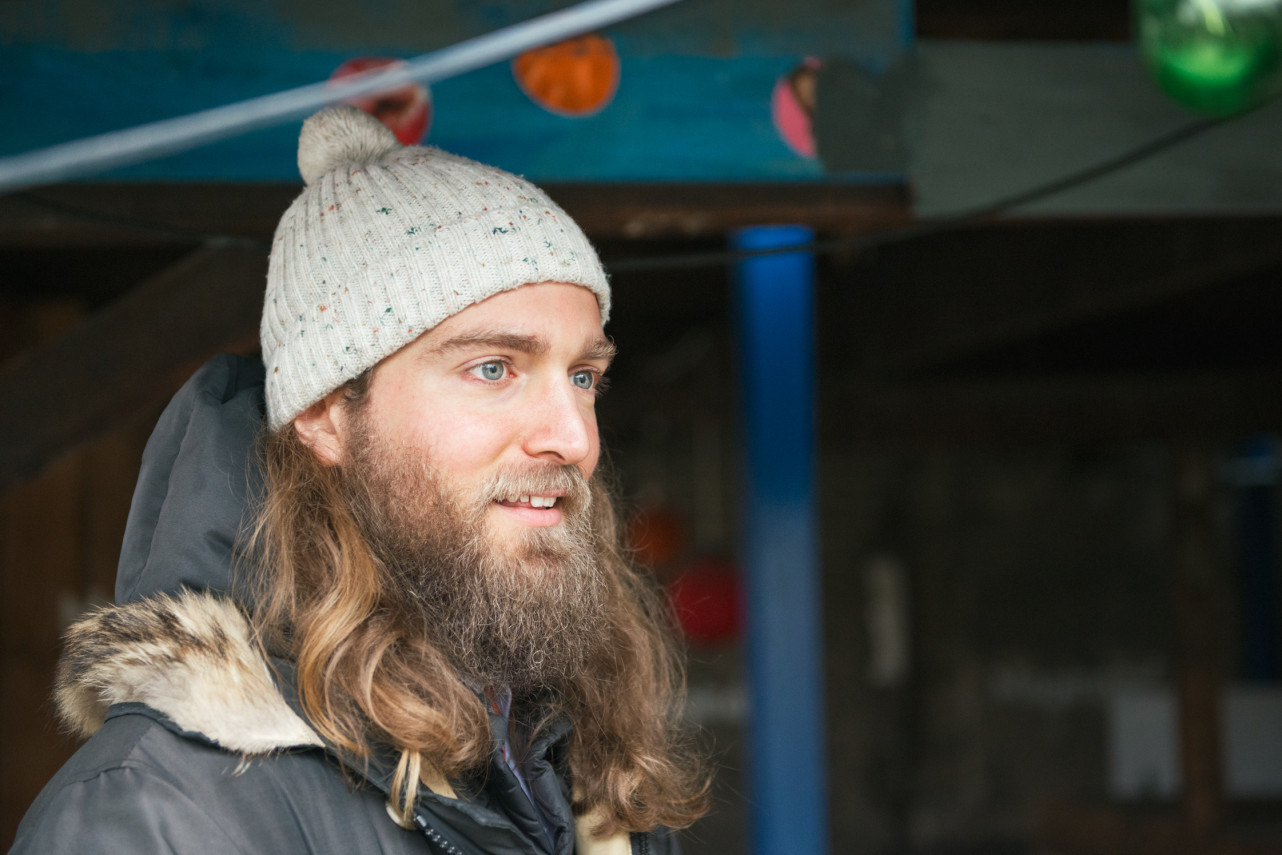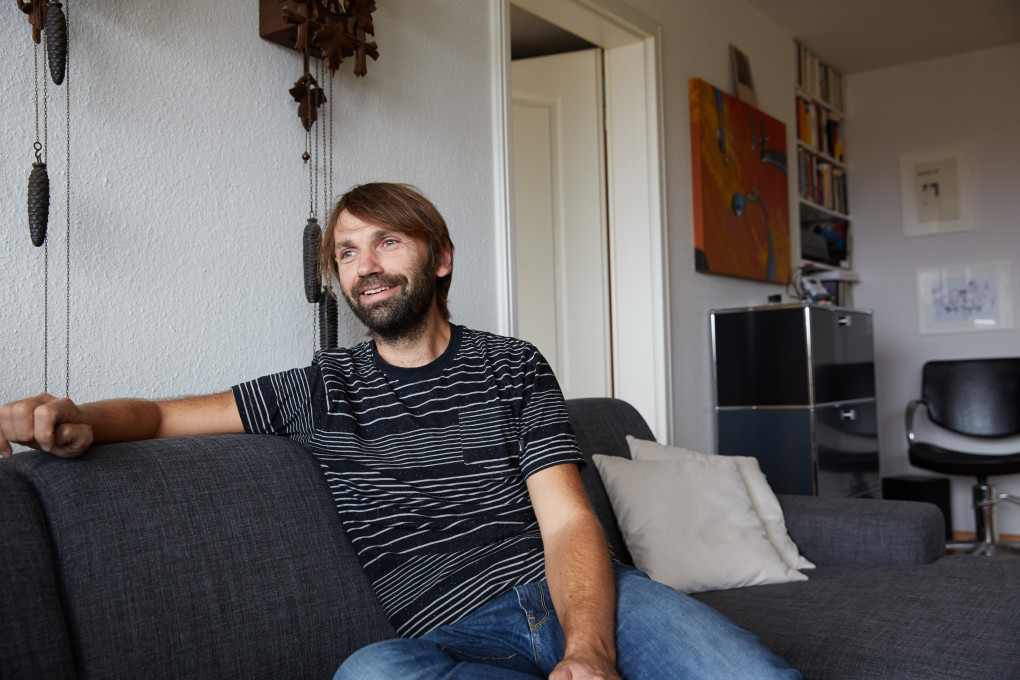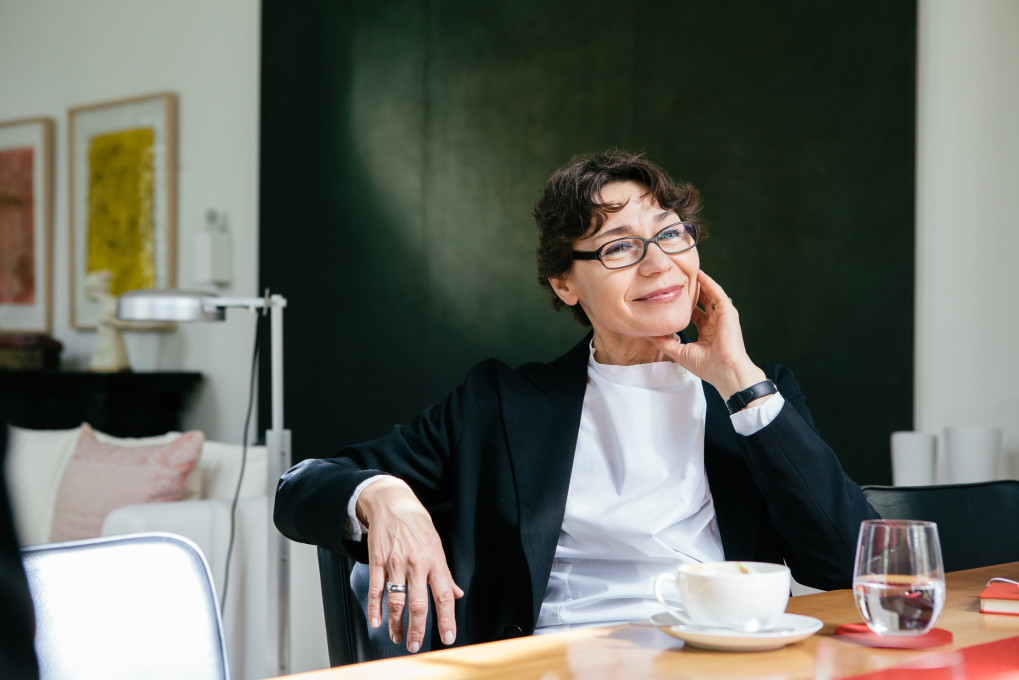Julius Kranefuss
Architect
8. October 2015
Kreuzberg & Neukölln, Berlin
Julius Kranefuss brings the same enthusiasm to his work as he does to life. He’s the type of person who never pauses to take a break, whether he’s working on a project for his architecture firm ZWEIDREI, collecting donations for underprivileged youth or meeting rising artists full of energy. On our visit to his Berlin office, he filled us in on his current projects – and the unusual ways in which he acquired his USM furniture.


Julius, your firm ZWEIDREI creates media architecture. Can you tell us what that means?
The term "media architecture" was originally meant to extend the classical concept of architecture. It became particularly popular in the 1970s, when the question arose of how to manage communities: How can architecture help create social spaces and urban identities? There was no longer talk of practicing architecture; instead, there was talk of expanding the view of architecture.
Media architecture was first mentioned when architecture started to be linked with modern technologies. In turn, it was quickly trivialized and the term only made appearances in the context of light façades and LED design. But it is basically meant to describe a type of architecture that integrates the influence of technology on people.



“We want to figure out how humans use their environment, and how we can react to that.”
Why does the term "media architecture" suit ZWEIDREI??
I used to think the label suited us well because we were working with groups of artists on installations and experimenting with sound and visualization – particularly in the period just after graduating from university. But over the last year, I realized that we actually want to practice architecture in a more direct sense. That’s why we’re now just called ZWEIDREI Architekten GmbH, without the "media architecture" addition.
Looking at all you’ve done, the diversity of your projects is clear. You even developed a table and chair.
At ZWEIDREI, we’re always trying to understand the meaning of space. For example, we ask ourselves: What are the limits of architecture? In this case, it was about spatial design. To me, the things that you need in daily life are space-building elements. That includes a table and a chair. The term "product designer" only exists because at some point someone said: "We have to differentiate that." In the end, it’s about the use of space. Many well-known product designers agree that furniture design is an extremely architectural job. It’s about finding out how people use their environments and figuring out how to respond to that.

Are you a product designer and an architect in one?
No. There are so many people who are significantly better at product design than we are. When we get the chance to design something different for a change, we welcome the experiment. But I always question whether our design is actually good. That’s how you keep learning, though. I think it’s important to mention that projects like that – and everything else in architecture – are never accomplished by one person alone. A personality cult that only highlights the architect doesn’t do the process justice. It wouldn’t be right to say that this is my table. This table alone involved eight people, and without my entire office, we never would have been able to contribute in the first place. It’s important to me that everyone gets the credit they deserve. It’s most fun that way anyway.
In addition to your own designs, you have a few USM Haller Furniture in your office.
There is a really nice story behind that. On the day we received the keys to our office, my brother and I went to the old office to clean it out. When we arrived, some furniture from the studio liquidation next door was sitting in the courtyard. The owner asked us if we could use any of it. He was very attached to his furniture, he said, but he couldn’t keep it. There was some really valuable stuff, and we had an empty truck with us. We started packing and suddenly I noticed a small USM Haller table. I thought to myself, Crazy! Then we were invited to look in the rooms upstairs and we found even more USM sideboards and tables.



You were allowed to just take everything with you?
Yes. In the beginning, I felt a little uncomfortable about it. But the previous owner was glad to see the furniture he valued so much go to a worthy new home.
Was this studio another architecture firm?
No. USM is common in architecture firms, but due to the functional aesthetic of the furniture, the pieces fit anywhere. They are assembled quickly and without complication, and come in exactly the dimensions you need – an outright great invention!
Would you like to have more USM in the future?
Definitely. The pieces are robust and durable. When it comes to office furniture, they’re classic. But they also work well in personal spaces, especially the sideboard. It’s timeless and versatile. That’s why it’s my favorite of all the USM models.




You are also very interested in art. Where does this passion come from?
I grew up in a very art-focused family, especially on the topic of art history. We used to go to every museum, for example, to see archeological excavations. I hated my parents for this. In addition, we always used the car to go on vacation – hundreds of kilometers to Italy, Spain or France. The drive there was exhausting enough, but then we also stopped constantly in order to look at things. At first, of course, I thought this was silly. But in retrospect, I know it was incredibly educational for me.
How did you come to appreciate the classical approach to education?
On one vacation, we took the highway to Bilbao to visit the museum by Frank Gehry, which had just opened. After that, Frank Gehry was a combination of hero and architect for me, and suddenly, the whole thing was totally enjoyable. It also brought me one step closer to studying architecture. At the very least, I began to experience art and architecture very presently.








For years, you’ve been working with the organization Round Table 5, an art auction platform that benefits children and adolescents. Does your enthusiasm for social engagement also run in the family?
I enjoyed a very liberal education. My family is rather large, with lots of cousins, uncles and aunts. In this kind of community, the first thing you learn is to be considerate of others. Family was always important to me and led me to have a positive view of life. We’re not alone in the world.
This thinking is also intrinsic to my architecture, which integrates factors such as sustainability. I grew up with green politics – with the concept of recycling, the end of nuclear energy. If you grow up with these ideas, they feel completely normal. And I try to do things right. Appreciating the value of other people is part of it. I don’t have a lot of possessions, but I am still able to share. It is rarely about money for me. That’s why I’m also a pretty bad businessman.
To conclude, do you have any dream projects that you haven’t been able to put into practice yet?
There is an endless list. But I have stopped just dreaming of everything that I could do. What we do every day is what we really love. It’s as simple as that. Even our own possibilities are endless.
Moreover, I am very critical of myself, and accordingly, all projects remain works in progress. I keep asking what I could have done better. You can’t have any experience twice, just as you can’t read a book twice with the same effect. This continuous development is the beautiful hermeneutics of learning. You have to be prepared to make mistakes.

We thank Julius for his time and for the insights into his office and his ways of working.
This portrait was produced by the international interview magazine Freunde von Freunden. There you’ll find more Information about Julius’ neighborhood in Kreuzberg and his home, where handmade furniture forms a beautiful contrast to his digital working life.
Find more USM furniture for your home and workspace here.


